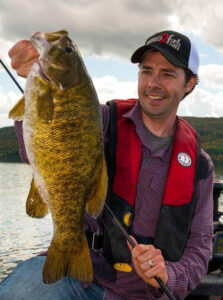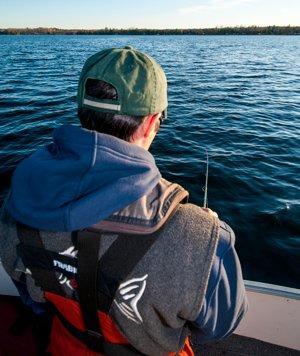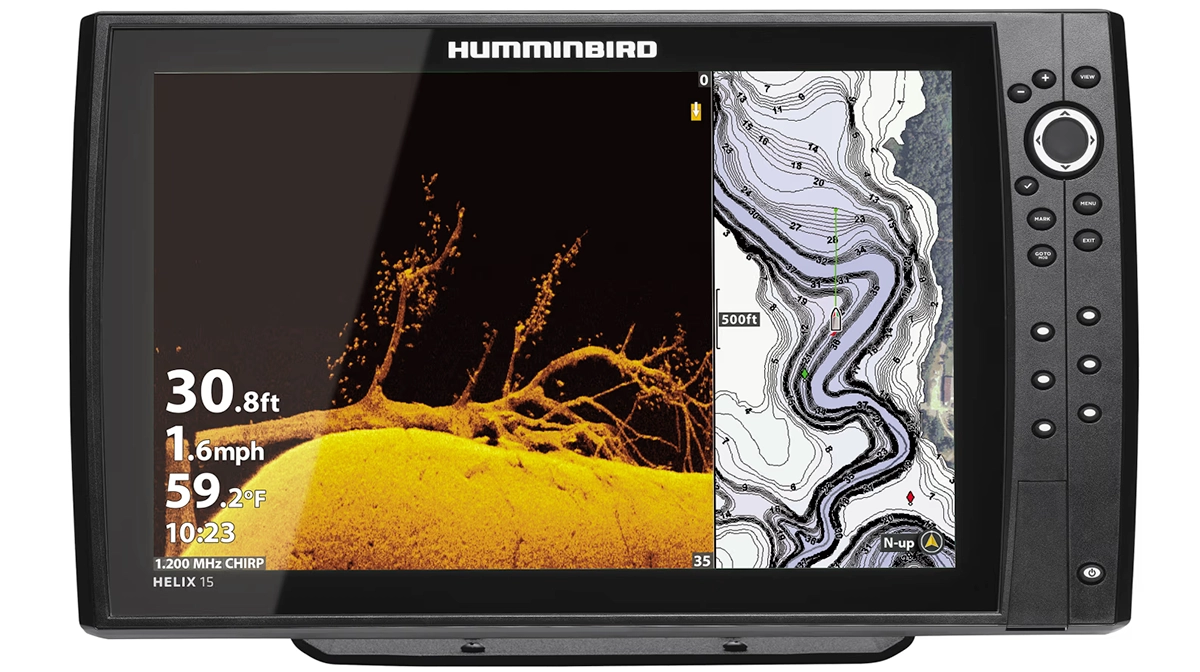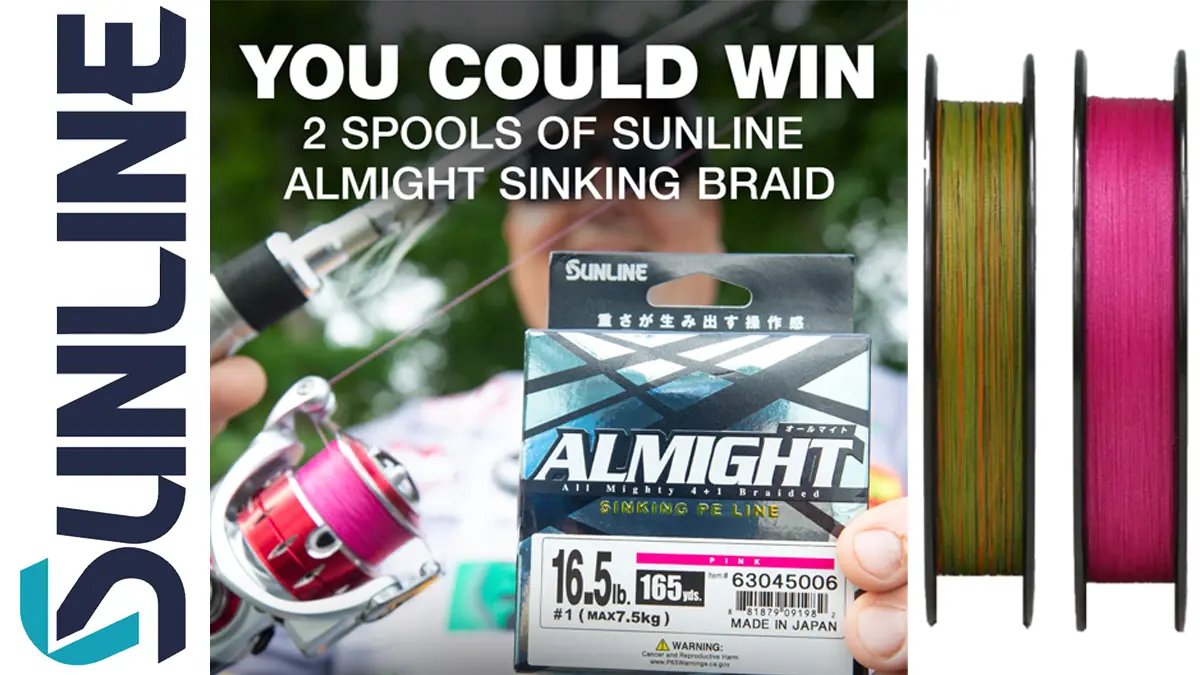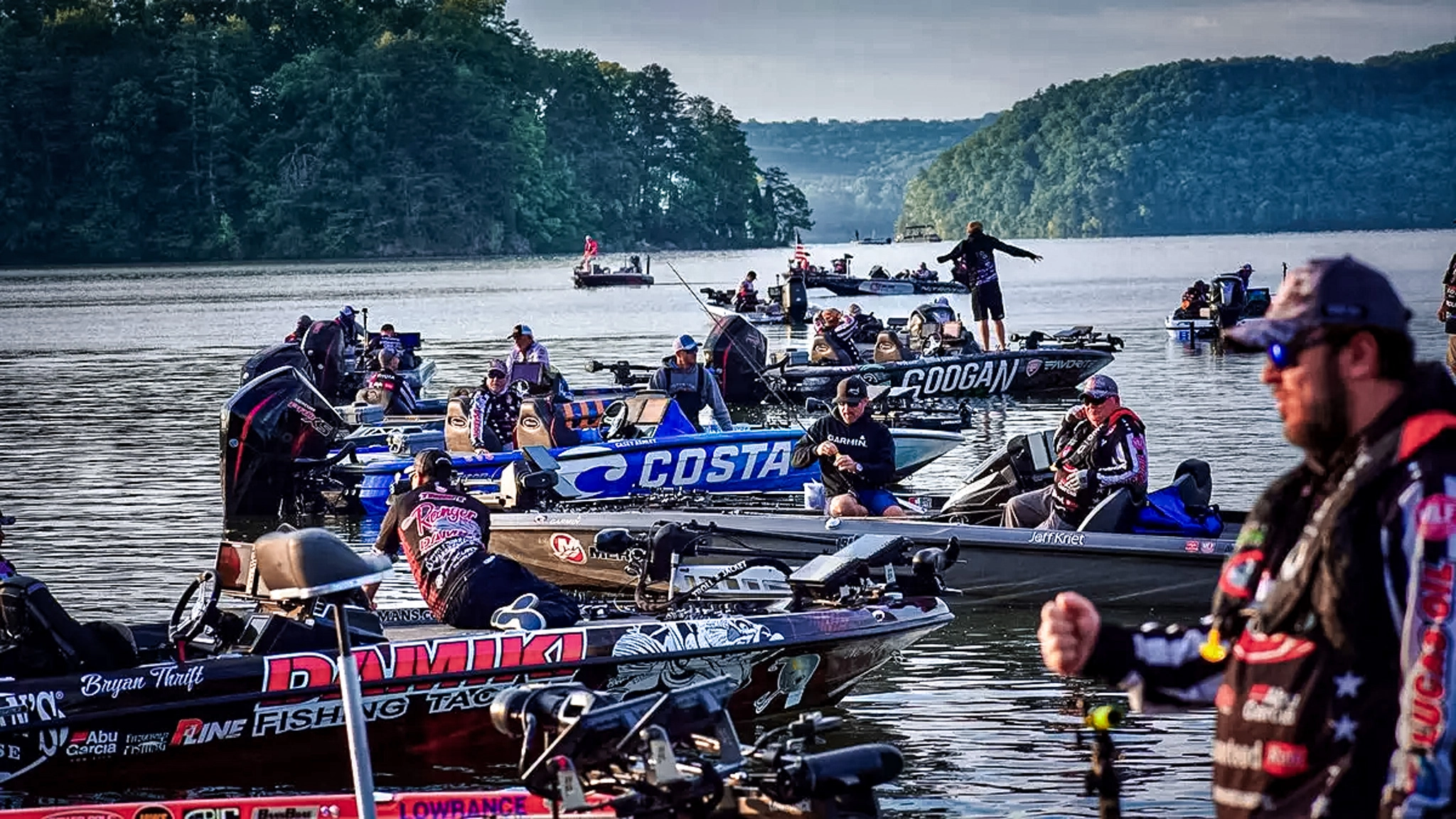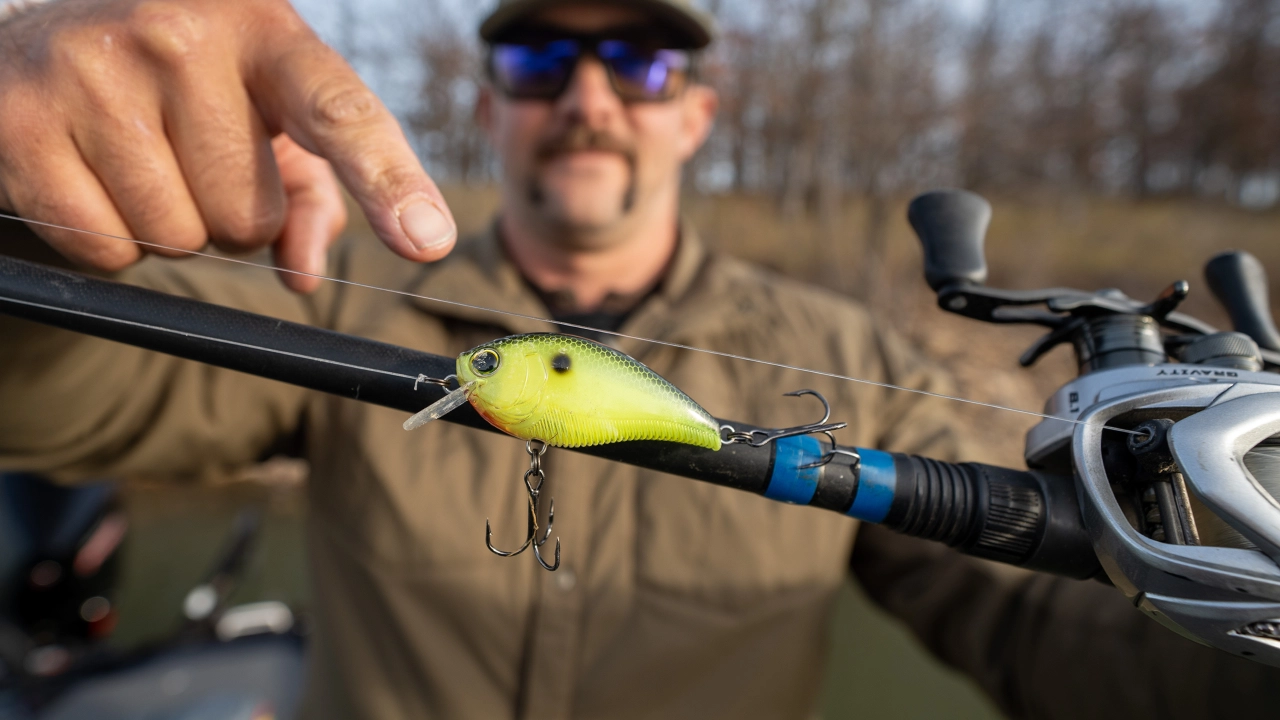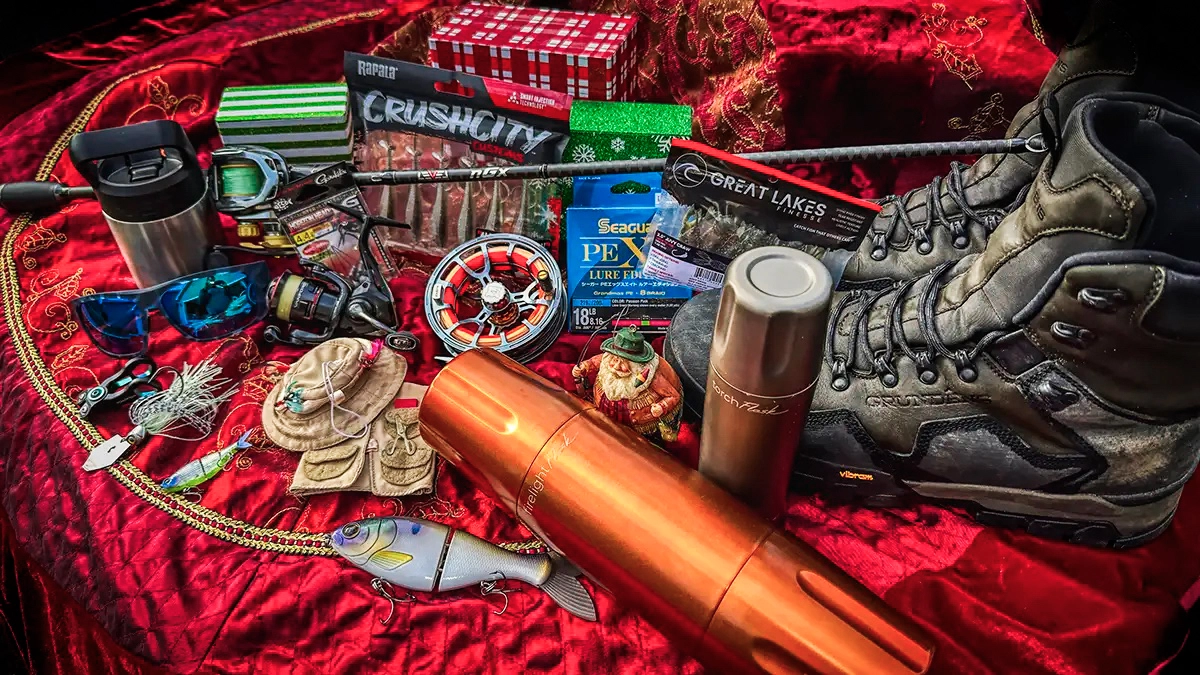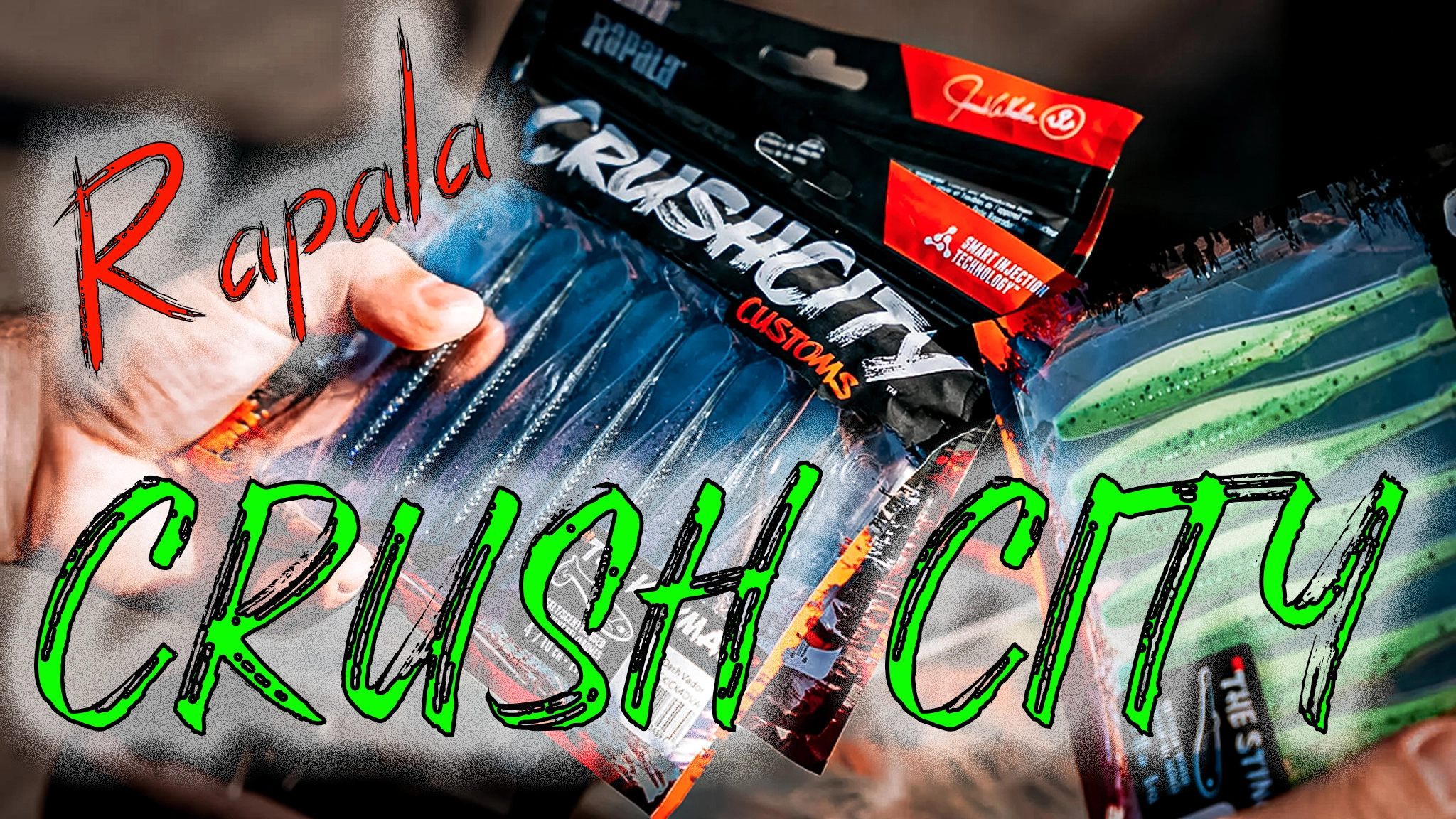Fall is a transition period for smallmouth. At this time, they move from summer locations to deep structures where they’ll overwinter. Anglers find strolling a reliable tactic for covering water for scattered bass, scouring deep structures and coaxing cold-water smallmouth to bite.
Strolling is a slow trolling tactic for jerkbaits and other diving hard baits. The tactic also involves dragging bottom with a jig, a drop shot or another sinking rig. Strolling speeds typically start at 0.5-mph for jigs and rigs and run to about 1.5 mph for jerkbaits. An electric motor usually powers the strollers offerings. This versatile tactic excels shallow to deep. Jerkbaits, bulky plastics and finesse worms often work best.
Here’s the quick rundown on strolling for big fall smallmouth bass:
- Perks of strolling
- Precision pays
- Jerkbait tips
- Bulky plastics vs. finesse plastics
Strolling perks
There are several advantages to pulling baits for smallmouth. Many of which are because strolling differs from casting.
- Long lines offer deeper runs – Strolling a jerkbait 150 to 200 feet behind the boat on 10-pound braid allows the bait to dive deeper than on a casting retrieve. Plus, once the lure dives to its running depth, it stays there for the entire strolling run. This keeps the jerkbait near deep structures and effectively lures smallmouth with a narrow strike zone.
- More room – Long-line strolling puts heaps of distance between the boat and the bait. This provides beneficial stealth in clear and shallow water. Ditto in deep water when smallmouth hunt shad high in the water column.
- Good for sluggish smallmouth – A strolled bait mixes the right amount of action for attracting lethargic smallmouth with slow enough speed to elicit strikes, especially in cold water.
- Strolling is uncomplicated – A youngster or a novice angler can easily pick up the tactic. Steering the boat, I can stroll their baits into the strike zone. Strolling a jerk bait also doesn’t demand the same timing and line control skills as casting. It also provides the sometimes necessary break from casting. Heck, you can even eat a sandwich while strolling – at least until a smallmouth strikes.
- Strolling works in a lot of places – On the natural, glacial lakes in Ontario, humps, reefs, points and bars are prime smallmouth strolling territories. A flat is another area where this method shines. Heavy weed areas are off limits, however, unless you can stroll beyond or along their edges.
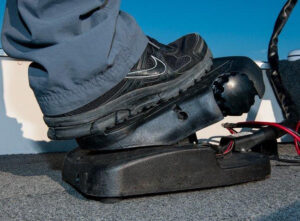
Precision pays
Strolling may be slow, but it should never be haphazard. Precise boat position and lure placement yield strolling success.
Electronics allow for necessary accuracy. Sonar determines the smallmouth’s depth and the terrain, which then helps choose the best bait to target them.
I recommend a GPS map chip containing depth contours or a series of waypoints for accurate passes through prime water. Monitor strolling speed using GPS. Once you pattern the pace smallmouth want, replicate it by adjusting the trolling motor thrust.
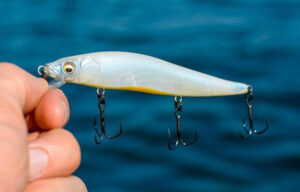
Jerkbait tips
Few lures stroll better than a suspending jerkbait. Its swimming motion appeals to smallies. Rod snaps add an erratic action for triggering followers to bite. Strolling selection should include shallow- to deep-running jerkbaits for fishing through a range of depths.
Tackle tips
Rod: 7- to 7 1/2-foot, or longer, spinning or casting rods quickly retrieve slack line and increase leverage during long-line battles.
Reel: large capacity models, such as a 4000-series spinning, allow for long-lining and rapid line pick-up.
Line: 10- to 15-pound braid allows for sensitivity and stout hooksets, while fluorocarbon leader allows for abrasion resistance and stealth. Straight fluoro is also an option.
Test first – Run a jerkbait beside the boat to determine an adequate strolling speed and to test its action.
- Give deep-runners time to dive – Begin strolling beyond a deep structure to give a jerkbait time to reach its maximum running depth. This also increases the chances of catching suspended smallmouth beyond the structure’s edges.
- Stall for second chances – When a smallmouth strikes but misses, stop the trolling motor and point the rod tip back to the jerkbait. This slows and pauses the lure, portraying vulnerability. A quick twitch after the intermission can reengage a smallmouth.
- Use a fluoro lead – Consider braid as a mainline. Its no-stretch quality provides sensitivity and solid hooksets. Use an 18- to 24-inch, 15- to 20-pound fluorocarbon leader. Its stiffness reduces the odds of a twitched lure darting forward and tangling in braid.
- Dive deeper – Applying adhesive weights, like Storm SuspenStrips, to the belly or nose of a deep-diving jerkbait increases its depth range. Using a slow-sinking model is a great way to get to deep-water smallmouth.
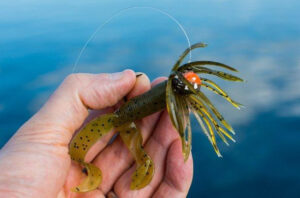
Bulky plastics
Strolling a bait along the lake floor catches smallmouth hugging bottom or down-feeding on gobies and crayfish. Chunky plastics routinely cater to the appetite of autumn smallmouth.
- Football jigs – A football jighead teamed with a beaver, creature or spider jig is a reliable strolling presentation. The head’s design sidesteps small snags and wobbles the bait for a lifelike action. Carry jigs between 1/4 to 3/4 ounce. Weight requirements vary depending on speed and depth. Tube jigs also work. Each bump and hop sways the plastic’s appendages.
- Carolina rig – Aurora-Ontario guide , David Chong, regularly strolls a Carolina rig on Lake Simcoe, Lake Ontario and Lake Erie. On tough bites with conditioned bass, he finds this rig is an asset because it’s not commonly used for smallmouth. Sand-weed flats, deep flats and the crown of a structure are prime areas for this set-up. A Texas-rigged, 4-inch tube, stick bait, crayfish, creature or goby lookalike are good strolling bets. A 1/4- to 3/4-ounce bullet sinker, bead, a 18- to 24-inch, fluorocarbon leader and 2/0 offset worm hook are the rig’s components. Chong uses an Ultra Tungsten weight. Tungsten produces a higher pitched sound with this rig than lead, which helps call in curious smallies. Thirty-pound braid is the main line, with 14-pound abrasion resistant Sunline Structure FC used for the leader.
- Shuffle the bait – Pull and twitch the plastic to add variety to the presentation. Pauses give smallmouth an easier target.

Finesse plastics
Four- to 5-inch finesse worms and minnows fit the technique as well. The tail action and thin profile of these baits teases neutral or inactive smallmouth to bite.
- Drop shot – A drop shot is perfect for strolling finesse plastics. It positions the bait off bottom. This keeps it visible while guarding it from most snags and clingy vegetation. Strolling puts a drop shot on an angle, so it’s common to need a longer tag than when fishing vertically. Experiment with 12- to 30-inch leads. I use a 1 to 2/0 drop-shot hook and a 1/4- to 3/4-ounce weight.
- Light jigs – A finesse worm strolls well on a 1/16- to 1/4-ounce mushroom or ball-head jig. Nudging a bait along bottom, gliding it above the floor or swimming it suspended through the water column are all effective.
It may lack the pizzazz of rapid fan casting with reaction baits, but strolling offers a reliable tactic for catching smallmouth. If big bronzebacks are in your crosshairs this fall, give strolling a try.
